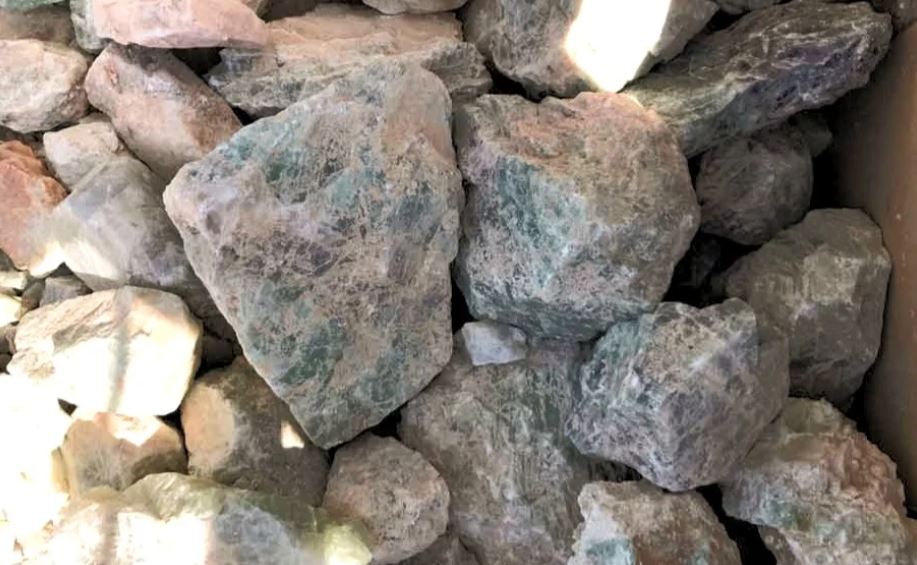Calcium Fluoride
Fluorite is a halide mineral with chemical formula is calcium fluoride (CaF2). Also called fluorspar. It is usually quite pure, but as much as 20 percent yttrium or cerium may replace calcium. Fluorite occurs most commonly as a glassy, many-hued vein mineral and is often associated with lead and silver ores; it also occurs in cavities, in sedimentary rocks, in pegmatites, and in hot-spring areas
An important industrial mineral. Fluorite commonly occurs as vibrant, well-formed crystals. A single crystal may have zones of different colors that follow the contour of the crystal faces. Fluorite crystals are widely found in cubes, while fluorite octahedra which are often twinned are much less common. The mineral can also be massive, granular, or compact. Fluorite occurs in hydrothermal deposits and as an accessory mineral in intermediate intrusive and silica-rich rocks. It is used in the manufacture of high-octane fuels and steel and in the production of hydrofluoric acid
Name: From the Latin to flow, in allusion to its low melting point.
Cell Data: Space Group: Fm3m. a = 5.4626 Z = 4
Association: Quartz, dolomite, calcite, barite, celestine, sulfides, cassiterite, topaz, wolframite, scheelite, apatite.
Crystallography: Isometric; hexoctahedral. Habit cubic, often in twinned cubes. Other forms are rare, but examples of all the forms of the hexoctahedral class have been observed; the tetrahexahedron and hexoctahedron are characteristic. Usually in crystals or in cleavable masses. Also massive; coarse or fine granular; columnar.
Diagnostic Features. Determined usually by its cubic crystals and octahedral cleavage; also vitreous luster and usually fine coloring, and by the fact that it can be scratched with a knife.
Chemical Properties
| Chemical Classification | Halide mineral |
| Chemical Composition | CaF2 |
Fluorite Physical Properties
| Color | Colorless, although samples are often deeply colored owing to impurities. |
| Streak | White |
| Luster | Vitreous |
| Diaphaneity | Transparent to translucent |
| Mohs Hardness | 4 (defining mineral) |
| Specific Gravity | 3.175–3.184 |
| Diagnostic Properties | May be fluorescent, phosphorescent, thermoluminescencent, and/or triboluminescent |
| Crystal System | Isometric |
Fluorite Optical Properties
 Optical Properties of Fluorite : under PPL
Optical Properties of Fluorite : under PPL
| Type | Isotropic |
| RI values | n = 1.433 – 1.448 |
| Twinning | Common |
| Dispersion | None |
| Birefringence | Isotropic minerals have no birefringence |
| Relief | Moderate |
Occurrence
Most fluorite occurs as vein fillings in rocks that have been subjected to hydrothermal activity. These veins often contain metallic ores which can include sulfides of tin, silver, lead, zinc, copper, and other metals. It is also found in the fractures and vugs of some limestones and dolomites. It can be massive, granular, or euhedral as octahedral or cubic crystals. It is a common mineral in hydrothermal and carbonate rocks worldwide.
Fluorite Uses
Numerous uses in the metallurgical,
ceramics, and chemical industries.
A source of fluorine, hydrofluoric acid, metallurgical flux.
igh-clarity pieces are used to make lenses for microscopes, telescopes, and cameras.







